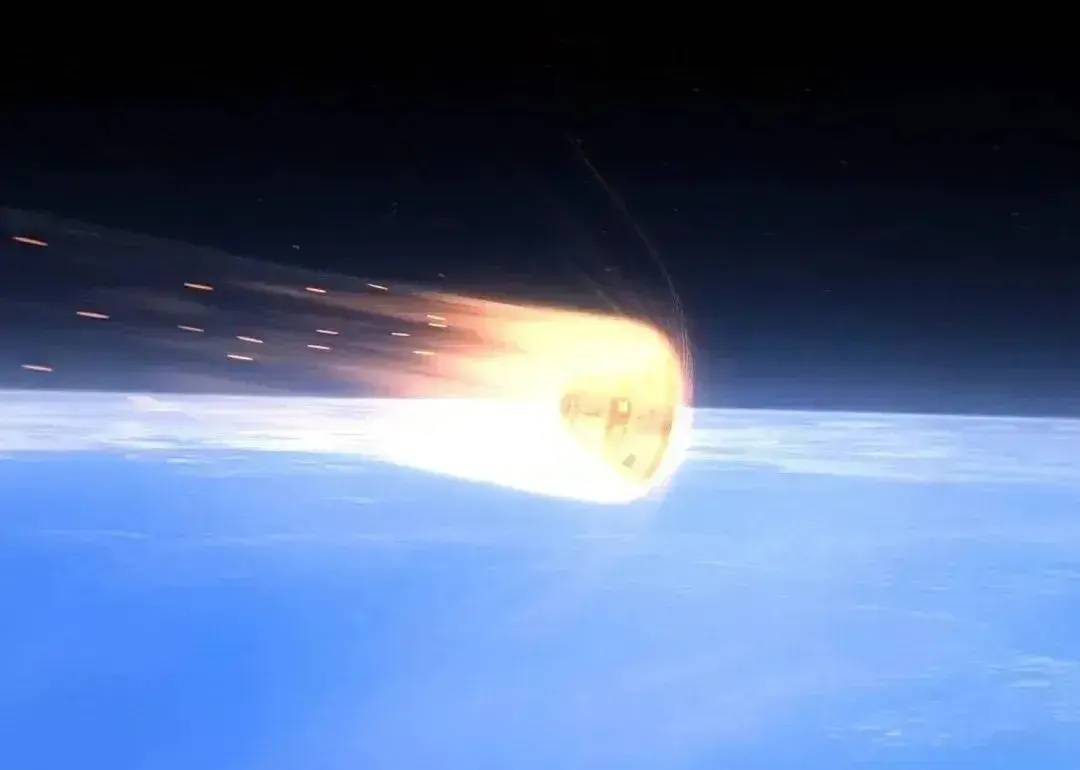
Recently, the Chinese lunar exploration vehicle Chang'e-6 successfully returned to Earth with its lunar backsampling return probe, bringing back precious lunar soil collected for the first time by humans from the far side of the moon. Its return speed reached an astonishing 31 Mach, showcasing the rapid development of China's aerospace technology and leaving a significant mark in human aerospace history.
What exactly does this speed mean? Mach number, as a unit of measurement for the ratio of object speed to sound speed, is 31 times the speed of sound. Calculated at standard atmospheric pressure, the speed of sound is about 340 meters per second. Mach 31 means that the speed of an aircraft has reached an astonishing 10549 meters per second, or about 38000 kilometers per hour, almost reaching the second cosmic speed. This is an extremely astonishing number, especially in the journey of space exploration.
How is this speed achieved? This is mainly attributed to the complex technical support behind it. When a spacecraft crosses the atmosphere, it must withstand extremely high temperatures and pressures while ensuring precise attitude control and trajectory adjustment. Therefore, the return module of Chang'e-6 adopts a unique heat resistant design, which effectively responds to high-temperature environments through high-temperature resistant materials and special structural design, ensuring the safe return of the spacecraft.
In addition, the Chang'e-6 spacecraft rushed into Earth from outer space at high speeds and used the "water drift" technology, also known as the "high-speed semi ballistic jump re-entry and return technology scheme", which uses specific angles and speeds to allow the spacecraft to "jump" in the atmosphere, greatly extending its range and reducing the pressure on heat-resistant materials. The successful application of this technology marks that China's aerospace industry has taken the lead in the world.
The "water float" technology also brings amazing landing accuracy. The landing location of Chang'e-6 this time is completely in line with the designated area, with a difference of only 600 meters from the center point. During the final landing of Chang'e-6, the parachute was opened, increasing flight resistance and the impact of wind speed on flight attitude, resulting in a deviation of 600 meters. This is enough to show that China has sufficient strength in the fields of flight guidance, attitude control, communication and other technologies of aircraft.
In addition, according to relevant reports, the return of Chang'e-6 also adopted GNC (Guided Navigation and Control System) technology, which can plan the best flight path based on the current position and speed, and high-precision navigation equipment can achieve real-time positioning, ensuring that the Chang'e-6 spacecraft can land accurately at a pre-selected location.
This means that Chang'e-6 can dive down from outer space, make a float, and then continuously maneuver and orbit at speeds exceeding 30 Mach, making it unpredictable and impossible for other countries to intercept, ultimately reaching its destination with precision.
The mastery of this high-speed return technology is of great significance. It not only demonstrates China's technological strength in the aerospace field to the world, but also lays a solid foundation for future space exploration and related technological development, and provides valuable experience for countries around the world to explore space.
Looking back at the history of human spaceflight, the earliest unmanned lunar return missions to float in space were the Soviet Union's Zond-6, Zond-7, and Zond-8 missions, one of which experienced a parachute malfunction leading to a crash. After half a century, compared with today's Chang'e series of return missions, China has a big lead in reliability and progressiveness.
In this space journey, we have seen the infinite charm of technology and also felt humanity's longing and pursuit for the unknown world. On the path of exploring the universe, astronauts from various countries are using their intelligence to contribute their efforts to realizing human space dreams.

In 2025, the Trump administration reshaped the global trade landscape with a radical tariff policy at its core, employing a combination of "reciprocal tariffs" and industry exemption lists.
In 2025, the Trump administration reshaped the global trade…
On December 26 local time, an apology statement from Japane…
When the U.S. government blacklisted EU digital regulatory …
The EU summit recently passed a resolution, in which 24 mem…
Europe's economy in 2025 exhibits a distinct feature of "su…
Russian President Vladimir Putin said that Russia has obser…